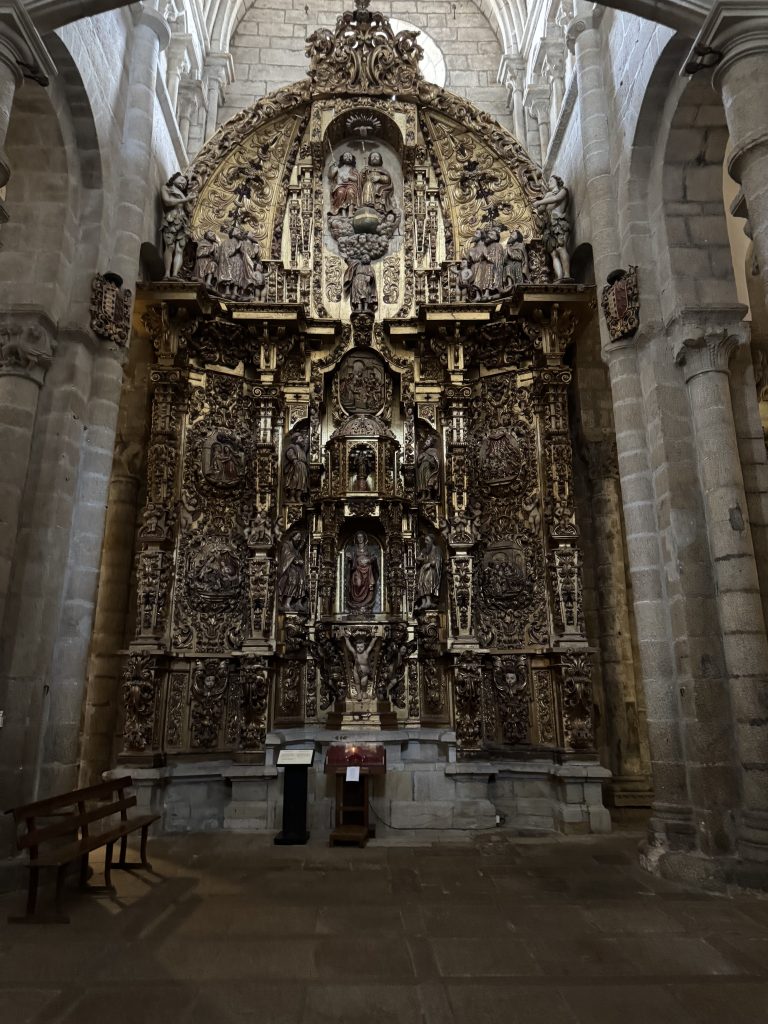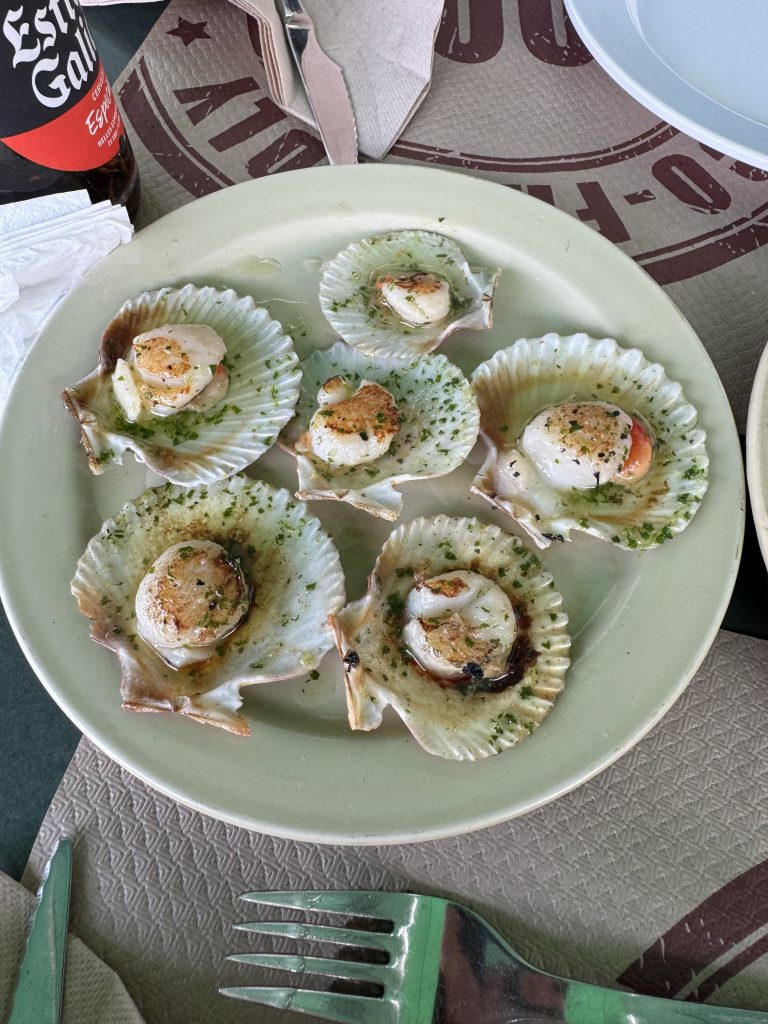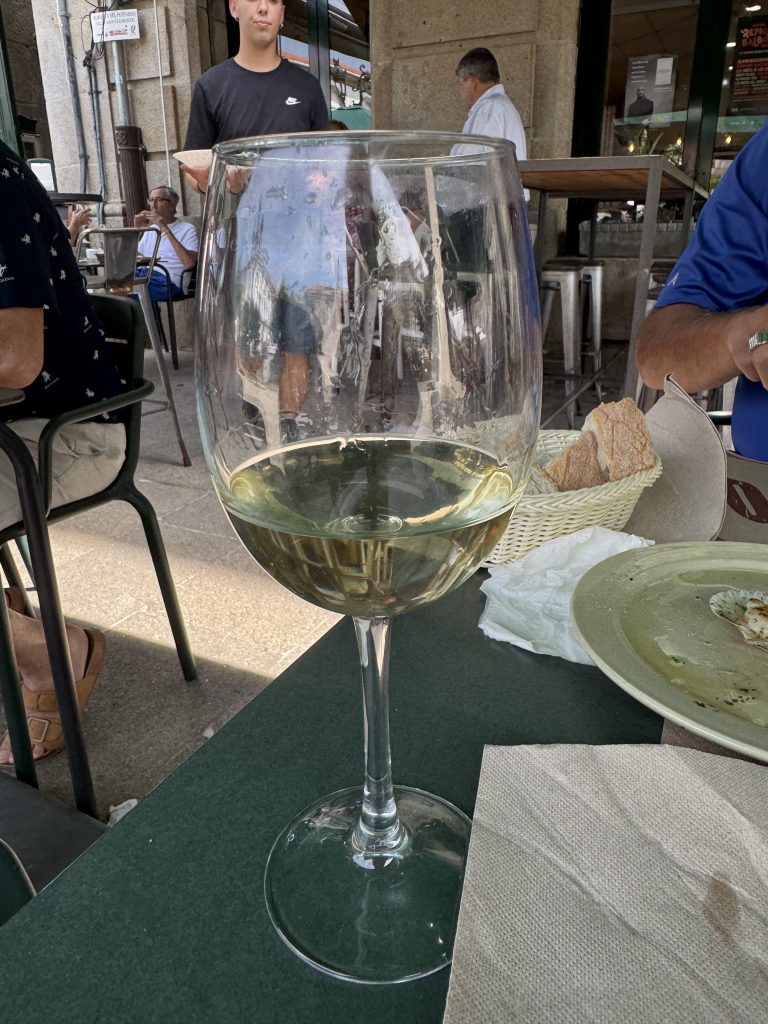You might be forgiven, dear reader, if you’ve come away from these early blog entries believing that my primary focus on this pilgrimage is not penitence, nor prayer, nor even blister prevention — but rather, the noble art of eating. I assure you this is only partly true. The rest of the time I am either thinking about food, talking about food, or walking in search of food, which is, spiritually speaking, a kind of prayer.
David and I set off this morning to explore the medieval city of Tui — a charming town which, while not particularly large, is positively overrun with ancient stones, crumbling grandeur, and the very specific type of cobblestone that exists solely to remind you that orthotics are a blessing.
We are staying at Hotel A Torre De Xudeo, a structure so old and venerable it probably remembers when pilgrims still travelled with donkeys and spiritual baggage rather than hiking poles and gluten intolerance. The grand stone staircase in the reception area could well have been climbed by Saint James himself — though judging by its incline, he probably only did it once.

This hotel, I might add, is ideally situated. By “ideally,” I mean it is so close to the Cathedral that one need only stumble down the steps (trying not to fall), take a sharp left past the Poor Clares, and you’re practically there. Speaking of the Convent of the Poor Clares, it sits just up the street — humble, closed, and silent. I assume the sisters are inside praying, baking, or quietly judging the footwear of passing tourists.
A few hundred metres further on stands the Cathedral of Santa María, a structure of such majesty that one approaches it not with footsteps but with awe. The bells — vast, noble, and likely audible from Portugal — hang overhead like iron archangels awaiting a signal. Inside, the space is cavernous and dark. The stone walls are measured in feet of thickness, presumably to keep out the cold and modernity. The windows, bless them, are charmingly small — as if the builders feared light might distract the faithful.

Despite its gloom, the cathedral’s presence commands reverence. I stood in silence for several minutes before being distracted by the entirely secular but deeply theological thought: “Is it lunch yet?”
We meandered down through the twisting medieval streets, which were charmingly uneven and very nearly ankle-threatening, until we reached the Miño River, gazing across to Portugal with the wistful air of pilgrims who are entirely aware that there’s probably a good café just over there, if only they had time to cross.
And then, naturally, it was time to eat.
Now, in this part of Tui, every other establishment is either a restaurant, a bar, or some glorious hybrid of both. We selected one with the air of quiet confidence and a promising wine list. The waiter, who clearly sized us up as men in urgent need of refreshment, brought David a beer so cold it seemed to glisten with virtue.


As for myself, I inquired about Vinho Verde, my Portuguese go-to. The waiter, not missing a beat, explained that here in Spain, the equivalent is called Vino Albariño, made with the same grape, but presumably blessed by different bishops. One sip took me back ten years to Mira, Portugal, and an unforgettable lunch with my friend Rev. Silvário, who—like this wine—was bold, sharp, and went very well with shellfish.

And shellfish, dear reader, is precisely what we ordered.
We enjoyed scallops and octopus, both cooked to perfection. I would go so far as to say that the Galician diet, heavy on seafood and wine and light on stress, may be the most effective wellness regimen I’ve yet encountered. My blood sugar levels, normally prone to dramatics, have been perfectly behaved. My insulin remains untouched in my bag, sulking quietly while I enjoy another meal it did not earn.

It may yet be that St. James was onto something. A long walk, a reverent heart, and a good lunch — with wine that tells stories and seafood that sings hymns — might just be the recipe for holiness.
Tomorrow, we walk. But today, we eat, pray, and marvel.
There is likely to be a part C today, as we are about to make a foray out to find a café on the Miño river to go and enjoy a nice espresso. I’m sure we will find many other interesting things along the way to the river. Stay tuned…